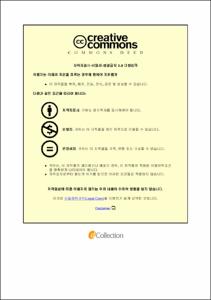일차성 족부 다한증 치료를 위한 3번과 4번 요부 교감신경 클립술 시행 후 임상적 효과와 환자 만족도 차이에 대한 고찰
- Abstract
- 배경: 요부 교감신경 절제술은 일차성 족부 다한증의 효과적인 치료법으로 간주되어 왔으나, 가장 효율적인 요부 교감신경 차단 레벨을 제시하는 보고는 지금까지 거의 없었다. 따라서 본 연구는 단일 기관에서 시행된 족부 다한증을 위한 L3 또는 L4 요부 교감신경 클립술을 받은 환자들의 수술 후 임상적 효과와 만족도를 비교하는 것을 목적으로 하였다.
대상 및 방법: 2015년 12월부터 2018년 6월까지, 일차성 족부 다한증을 가진 500명의 환자들을 대상으로 3 mm 티나늄 클립을 이용한 요부 교감신경 클립술을 시행하였다. 이 중 436명은 초기 수술 후 결과 분석, 134명은 장기 추적 관찰 결과 분석의 대상이 되었으며, 64명은 양측의 클립 차단 레벨이 서로 같지 않아 통계적 편향을 피하기 위해 제외되었다. 표적 신경의 식별과 클립차단을 위해 손가락 터치 및 내시경적 보조 방법을 사용하였으며, 수술 직 후 시행한 엑스레이 검사를 이용하여 클립의 위치를 확인하였다. 환자의 만족도 척도와 다한증 관련 설문 (HidroQoL©) 은 수술 후 10일째, 그리고 3년 이상 경과한 후에 실시되었다.
결과: 436명의 환자들의 남녀 성비는 같았고, 평균 나이는 26.3 ± 7.2 (14~49) 세였다. 평균 수술 시간은 43.9 ± 8.7 분이었으며, L3와 L4 클립차단 레벨 비율은 4:1이었다. 134명의 장기 추척 관찰 기간은 50.7 ± 8.8 개월 (39.7~69.3 개월) 이었다. 요부 교감신경 절단술과 함께 동시에 내시경적 흉부 교감신경 절단술을 시행 받은 환자 수는 359명 (82.3%)이었다. 초기 수술 후 보상성 다한증은 40.1%에서 보고되었으며 0.5%의 환자들은 수술을 후회할 정도의 심한 보상성 다한증으로 분류되었다. 그러나 장기 추적 관찰 환자 군에서는 그 비율이 각각 88.1% 와 12.7%로 증가하였다. 마찬가지로 발 다한증 수술만을 받은 하위 그룹 분석에서도, 초기 결과에서는 심한 보상성 다한증 환자가 없었지만, 후기 결과에서는 3명 (12.5%)으로 나타났다. 하위 그룹 분석 대상 환자들의 초기 및 후기 만족도 척도는 각각 10점 만점에 9.7±0.6 점과 7.5±2.8 점이었으며, 이는 전체 환자 군에서도 유사하였다. 일시적 발한과 신경통은 각각 33.3% 와 2.3%의 환자에게서 발생하였다. 신경통 및 수술 시간을 제외하고, 클립 차단 레벨과 관련하여 대부분의 수술 전 후 결과와 장기 추척 관찰 결과에서 유의미한 차이가 없었다.
결론: 요부 교감신경 클립술은 일상생활의 불편함으로 고통받고 있는 족부 다한증 환자들이 선택할 수 있는 가치 있는 치료법이며, 낮은 합병증과 높은 만족도가 이를 뒷받침한다. 본 연구에서 L3 와 L4 교감신경 차단 그룹 간의 초기 및 후기 만족도는 유의미한 차이가 없었다.
중심단어 : 다한증, 요부 교감신경 클립술, 족부 다한증
|Background: Lumbar sympathectomy is considered effective for treating primary plantar hyperhidrosis. However, only a few reports have reported on the most efficient target level in lumbar sympathectomy. Therefore, this study aimed to compare patient satisfaction after L3 or L4 lumbar sympathetic clipping for plantar hyperhidrosis in a large series of consecutive patients at a single center.
Materials and Methods: Between December 2015 and June 2018, we performed lumbar sympathetic clipping using 3-mm titanium clips on 500 patients with primary plantar hyperhidrosis. Among these, 436 patients were analyzed for immediate postoperative outcomes, and 134 patients who were followed up were included in the long-term analysis. Sixty-four patients were excluded because of bilaterally mismatched clipping levels to avoid a bias. Target nerve identification and clipping were performed using finger touch and video-assisted endoscopic methods. The clip location was immediately evaluated postoperatively using radiography. Patients’ satisfaction scale and hyperhidrosis-specific questionnaires (HidroQoL©) were administered on the 10th day and > 3 years postoperatively.
Results: Of the 436 patients, the sex ratio was the same, and their mean age was 26.3 ± 7.2 years (range, 14 to 49 years). The mean operation time was 43.9 ± 8.7 min, and the L3:L4 clipping level ratio was 4:1. The mean follow-up period was 50.7 ± 8.8 months (range, 39.7 to 69.3 months). The number of patients who underwent simultaneous endoscopic thoracic sympathicotomy was 359 (82.3%). Seventy-seven (17.7%) patients underwent lumbar sympathicotomy alone, of which 39 (8.9%) had previously undergone thoracic sympathicotomy. Early postoperative compensatory hidrosis was reported in 40.1% of patients, with 0.5% rated as severe with a regret of undergoing surgery. However, the proportions increased to 88.1% and 12.7%, respectively, in the long-term results group. Similarly, in the subgroup analysis of patients who underwent only lumbar sympathetic clipping, no severe compensatory hyperhidrosis was noted in the early results; however, severe compensatory hyperhidrosis was noted in three patients (12.5%) in the late results. The early and late satisfaction scales of subgroup patients were 9.7 ± 0.6 and 7.5 ± 2.8 out of 10, respectively, and they were similar in the total patients group. The incidences of temporary hidrosis and self-limited neuralgia were 33.3% and 2.3%, respectively. There was no significant difference in most perioperative outcomes and long-term results with respect to the clipping level, except for neuralgia and operation time.
Conclusion: Lumbar sympathetic clipping is a valuable choice of treatment for patients with plantar hyperhidrosis. This is supported by the low complication rate and the high post-operative satisfaction scores. There was no significant difference in early and late satisfaction between the L3 and L4 levels of sympathetic clipping.
Keywords: Hyperhidrosis, Lumbar sympathetic clipping, Plantar hyperhidrosis
- Issued Date
- 2022
- Awarded Date
- 2022-02
- Type
- dissertation
- Keyword
- 다한증; 요부 교감신경 클립술; 족부 다한증
- Alternative Author(s)
- SEOK WON YUN
- Affiliation
- 울산대학교
- Department
- 일반대학원 의학과
- Advisor
- 김동관
- Degree
- Doctor
- Publisher
- 울산대학교 일반대학원 의학과
- Language
- eng
- Rights
- 울산대학교 논문은 저작권에 의해 보호 받습니다.
- Appears in Collections:
- Medicine > 2. Theses (Ph.D)
- 파일 목록
-
-
Download
 200000595304.pdf
기타 데이터 / 1.45 MB / Adobe PDF
200000595304.pdf
기타 데이터 / 1.45 MB / Adobe PDF
-
Items in Repository are protected by copyright, with all rights reserved, unless otherwise indicated.